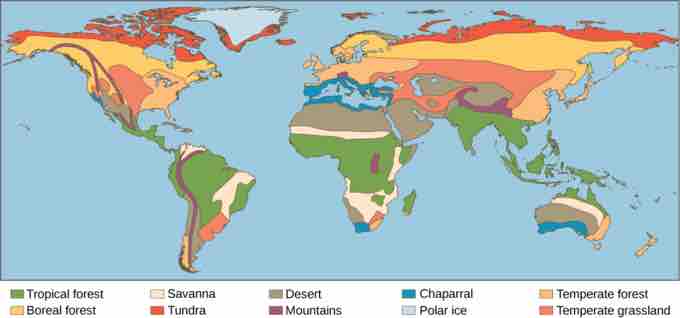What Constitutes a Biome?
A group of living organisms of the same kind that live in the same place simultaneously is known as a population. Populations live together in habitats, which together make up a community. An ecosystem is a community of living organisms interacting with the non-living components of that environment.
A biome is a community on a global scale, where habitats flank each other, and is usually defined by the temperature, precipitation, and types of plants and animals that inhabit it. The Earth's biomes are categorized into two major groups: terrestrial and aquatic. Terrestrial biomes are based on land, while aquatic biomes include both ocean and freshwater biomes. The major types of biomes include: aquatic, desert, forest, grassland, savannas, and tundra.
Biome Attributes
Generally, biome classification is determined by the climate and geography of an area. Each biome consists of communities that have adapted to the different climate and environment inside the biome. Specifically, there are special vegetation adaptations as well as physical and behavioral adaptions made by animals in order to accommodate the environment. The eight major terrestrial biomes on Earth are each distinguished by characteristic temperatures and amount of precipitation . Comparing the annual totals of precipitation and fluctuations in precipitation from one biome to another provides clues as to the importance of abiotic factors in the distribution of biomes. Temperature variation on a daily and seasonal basis is also important for predicting the geographic distribution of the biome and the vegetation type in the biome.

Earth's Major Biomes
Each of the world's major biomes is distinguished by characteristic temperatures and amounts of precipitation. Each type of biome can be found in multiple places.
The distribution of these biomes shows that the same biome can occur in geographically distinct areas with similar climates. Biomes have no distinct boundaries. Instead, there is a transition zone called an ecotone, which contains a variety of plants and animals. For example, an ecotone might be a transition region between a grassland and a desert, with species from both.